The Hampton Classic is an unlikely scene for a disaster. In videos, the late summer sun is splitting the spaces between the stands. The tops of the trees behind the crisp white verandas look like they were drawn in curls of green crayon. There’s an American flag in the middle of the show-jumping ring and the breeze flicking at it can only feel welcome on the faces in the stands. It looks like a place where the worst that could happen would be maybe dropping your salad fork before you get to eat lunch.
On the last day of August 2019, Kevin Babington entered the ring on his horse Shorapur. In the 32 years since leaving Ireland as a teenager, he'd jumped thousands of rounds just like this one. Indeed in 2014, he and Shorapur had skated around this very arena in the fastest time with the fewest faults and carried home a first prize of $250,000. These rounds were where he lived.
He’d built two businesses off the back of these rounds. He’d come fourth in the Athens Olympics on the strength of them, missing out on a medal by the width of one poxy pole. He’d been a mainstay of Ireland teams that had won gold at the European Championships and a dozen Nations Cups. He’d won Grands Prix on both sides of the Atlantic. All of it from jumping around these arenas.
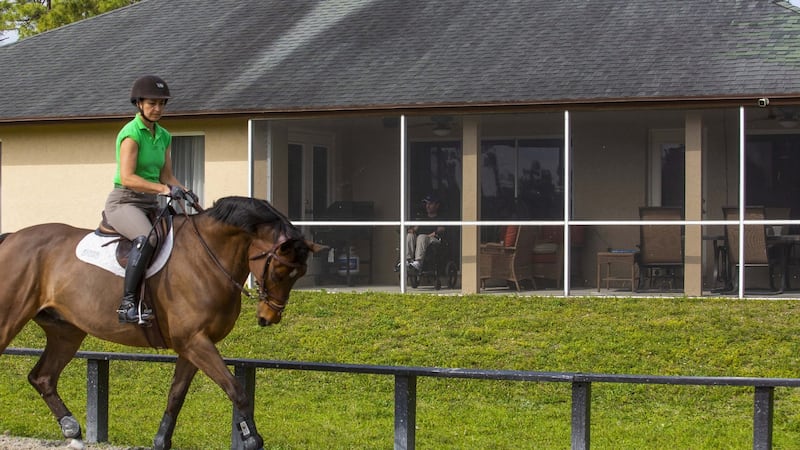
Neither he nor his wife Dianna have watched the footage back. Partly because they can’t bear to, partly because they don’t need to. They know what happened, every beat of it. Shorapur came to a triple combination down a side of the arena where that gorgeous Long Island sun was throwing spikes of shade onto the ground.
They cleared the first and the second but a shadow fooled the horse into thinking the third was closer than was the case. She took off too early and couldn’t get her front legs out in time to clear it. Immediately, the Shorapur was a tangle of poles and reins and Babington was gravity’s guest.
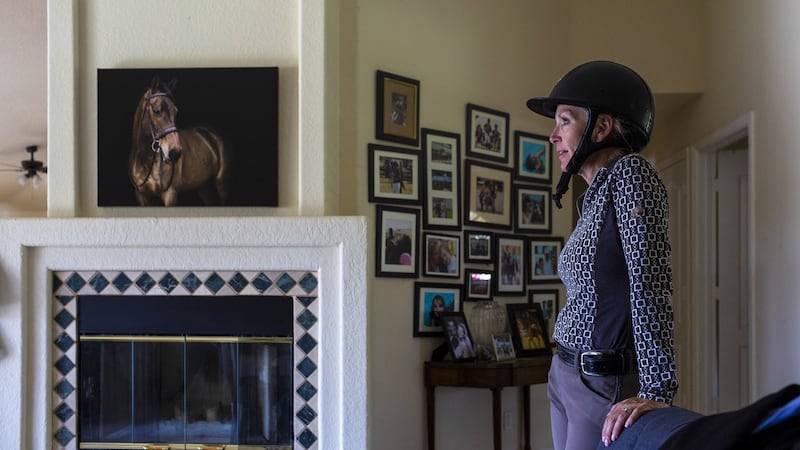
Dianna Babington is the kind of force of nature that makes other forces of nature look a bit lazy. Since the day their lives changed 13 months ago, she has taken over the running of their businesses, organised Kevin's care regime, pushed along his rehab, spearheaded fundraising for their foundation and mother-henned their two teenage daughters. All the while living through a pandemic that has made every inch of it feel like a yard.
She has, in other words, got quite enough on her plate without The Irish Times drilling her for details of the worst 10 seconds of her life. We don’t need to, in any case. Here she is, talking to The Equestrian Podcast last month, describing what happened to Kevin when he was thrown from Shorapur.
“When he hit the ground, he thought, ‘Roll. Get out of her way.’ But he couldn’t roll. His body wouldn’t move for him. That’s when he knew it was serious. When people came out into the ring to him, the first thing he said was, ‘Do not touch me. Do not move me. Something is wrong.’
“He pretty much did a somersault on his Adam’s Apple. You know when you’re a kid they teach you to tuck and roll? Well, he didn’t tuck and roll. He didn’t have an opportunity to. He basically flipped over on his neck and had the worst whiplash ever.
“How he didn’t get killed is a miracle. He should have broken his neck. But instead of the neck actually breaking, he tore all the ligaments in it. The bones didn’t break but instead he had what’s called a stretch injury of the spinal cord and a contusion of the spinal cord at C3 and C4.
“It’s basically a bruise of his spinal cord. You are far better off breaking bones than bruising the spinal cord. Essentially, his vertebrae bounced off the spinal cord and created this huge swelling. The bruising and stretching have caused damage within the cord.”
It changed everything. Thirteen months into his recovery, Kevin Babington is paralysed. He has some movement in his right arm but not yet enough in his hand to be able to grip with force. He moves his wheelchair with his chin, which is fine and not nothing but it’s still not really ideal. He’d rather do it with his hand - the chin control causes his teeth to rattle when he goes over a bump.
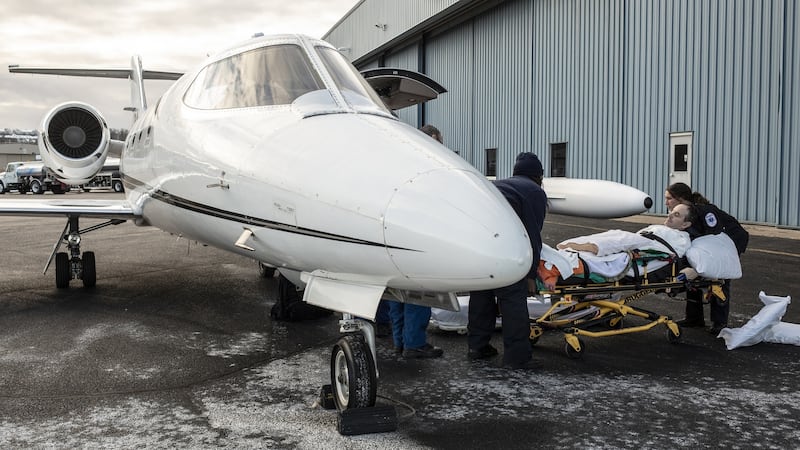
“Simple things are tough,” he says from his home in Florida. “I can’t dress myself in the morning, I need help doing that. I can’t run over and change the television when something’s annoying me or when somebody calls me. I’ve learned to be pretty independent on my phone, I can finally most of the time answer a call without it going to voicemail. When I’m on the phone with somebody and they don’t hang up, it’s hard for me to do it. Everything is done through voice controls. Things you take for granted, you need help with. For me, I need to be active. I need to feel like I’m doing something.
“I have a great support system around me. That’s been a huge help. They don’t give you time to feel sorry for yourself. I always have an activity that I’m doing. Even something as simple as doing this interview or giving a lesson, going to physical therapy. As long as I’m keeping myself busy I’m okay.
“Have I had hard days? Yes. But listen there’s people who have far worse things happen to them than I have. People have had brain injuries from horses, on top of being paralysed. The one thing I have is my mind. And luckily I’m from Ireland so I’m well able to talk.”
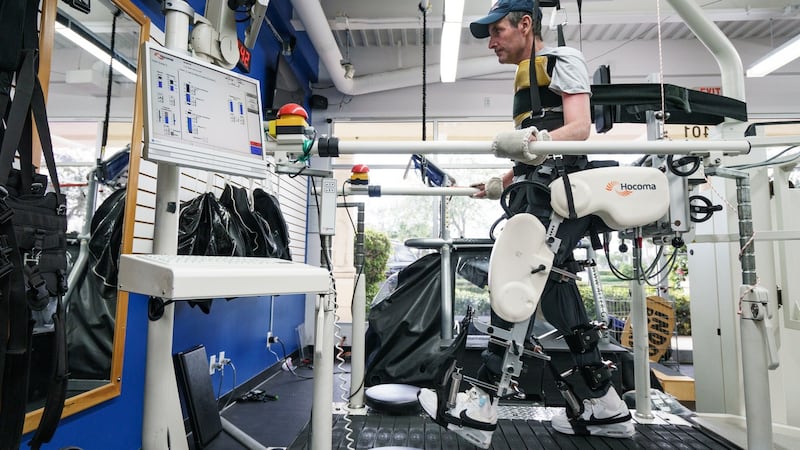
James and Mary Babington raised a family of 11 kids above their drapery in Carrick-On-Suir. They did a fine line in Aran sweaters and exported them to America, where the Clancy Brothers wore them on stage and made them famous. They weren't horsey people at all really but their youngest, Kevin, got the bug around the age of nine and never shook it.
In the summer of 1987, Kevin and his friend John Brennan were pupils in Iris Kellett's riding school in Kill. They had jobs lined up working for horse dealers in Switzerland but one day a guy came into Kill saying he needed two riding instructors to come and teach a girl's summer camp in Vermont. Switzerland could wait.
“I had no idea what to expect,” Babington says. “I had never been to the States. But John and I figured it was a schoolgirls’ summer camp, how bad could it be? We were still only 18, it didn’t sound like a bad way to spend a few months. We were pups, really. So off we went to America and we really liked it. We outstayed our visa and applied for a working permit and I ended up getting the Donnelly Visa.”
Thirty-two years later, when he was lying prone on the ground in Bridgehampton, NY, the first person into the ring to tend to him was John Brennan. In the three decades that had passed, they had both made their way through the equestrian world, become successful businessmen, raised families. They hadn’t exactly gone to America with much of a plan but by any measure you want to use, it had all worked out. Now look what happened.
“I came to America with 300 bucks in my pocket,” Babington says. “If I wasn’t optimistic, I don’t think I would have gotten anywhere. I always looked to improve myself. I always had goals. Like anybody, we’ve had our ups and downs along the way.
"But I grew two good businesses since I've been over here - Kevin Babington LLC is my horse training business and I have a Babington Mills which is my feed and bedding business. You have to be optimistic to do that because not every day is rosy.
“You learn to deal with it. We’re so passionate about what we do that it takes a lot to keep us down. We’re always looking to get back up. I couldn’t wait to get back down here to Florida and start teaching again. My first love was riding but I just wanted to be around the horses. And I think most horse people have that attitude.”
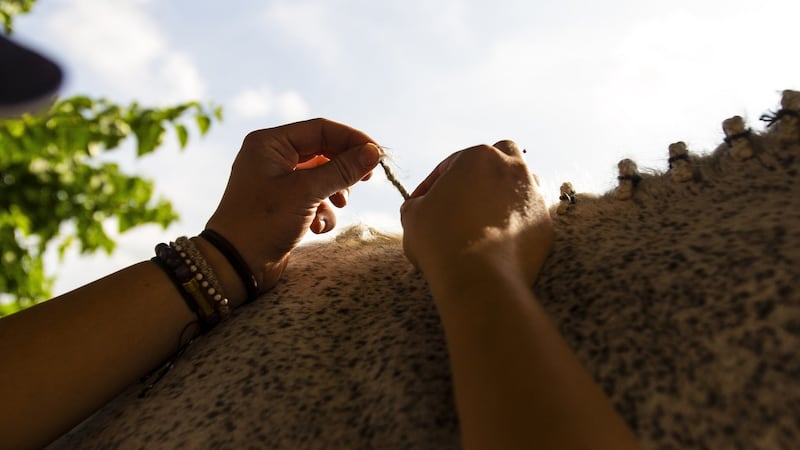
Optimism can only carry them so far, all the same. The costs of an injury like his are eye-watering. They have had help from fundraisers and GoFundMe campaigns, as well as private assistance but it’s a long road and they’re only at the beginning of it. He was in hospital in New York for a month after the accident and in intense physiotherapy for another four months after that.
They had top of the line health insurance but still it only went so far. A month after the accident, Dianna arrived home to find two separate $10,000 cheques in the post from people looking to help out. She had no idea why they would be sending her money - their insurance was going to carry the load, surely. Turned out they were from people who knew the terrain. And worse, they knew a 10-grand cheque here and there was only going to be a drop in the ocean.
“We had very good insurance but they hit you at every corner,” Kevin says. “They try to cover as little as possible. Somebody said when this accident happened that it’s a 2-5 million dollar accident and I thought it was a ridiculous thing to say. No way it could cost that. But we weren’t long finding out how expensive everything is. I’m very fortunate to have a great wife and two kids who help me with everything as much as they can.
“But the reality is that Dianna does a lot of teaching and she goes to the shows that I can’t. The kids have started back in school and they stay very involved in the horses and in the business. They can only do so much so I have a night aid that comes in and a day aid that comes in. I have two very good people that help me during the day.”
My long-term goal is to be able to walk. I'd love to be able to walk or ride
He sets targets. He does what’s possible. He can’t walk and he can’t ride but that doesn’t mean he can’t teach. Five months after his accident, he was back teaching at his riding school. He sits in his chair on his porch, coaching riders in the ring a few metres from the side of his house.
He wears a headset linked up to buds they wear in their ears. Recently, he has started doing it online too. He was dubious at first but it has become a revelation to him. As long as the connection is clear and the person filming them has a steady hand, he can teach someone to ride regardless of whether they're in Florida, Pennsylvania or Tipperary.
“I would say I was 50 per cent a rider and 50 per cent a riding instructor before the accident. I was spending many hours each week teaching before the accident. It came very naturally to me. Even when I was in the rehab, students were sending me videos of them competing and I really stayed on top of it.
“My long-term goal is to be able to walk. I’d love to be able to walk or ride. I’m just over a year now since the accident and they tell me that I’m still only in the short term. It feels like a long time to me but they’re used to working with people who show up two to three years into their accident. A lot of people have told me it could take two to three years for the inflammation around the spine to go down.
“I do have goals. I’m trying to be realistic about not setting a timeframe that is out of the question. Would I love to be able to walk next month? Of course I would. Is it realistic? Probably not.”
He started a new physio regime recently, going three times a week. He does hyperbaric chambers and there’s stem cell treatments coming along and he’s up for all of them. But he can only do what he can only do. Next month, next year, none of them exist. Only today, only now.
When he was growing up, there was a family shop five doors down from the drapery run by a chap called Mick Bennett. The Bennett kids played with the Babbington kids all the way up along until life scattered them to the winds.
Kevin went to Kildare to learn about horses and ended up in America. Mick Bennett junior moved to Belgium to play soccer and came home with his family in 1995 to manage Waterford United. Last Sunday morning, Kevin was in his chair in Florida watching the Tour de France, roaring Mick's young lad Sam down the Champs Élysées.
Realism is important. But you wouldn’t want to get too caught up in it either.










